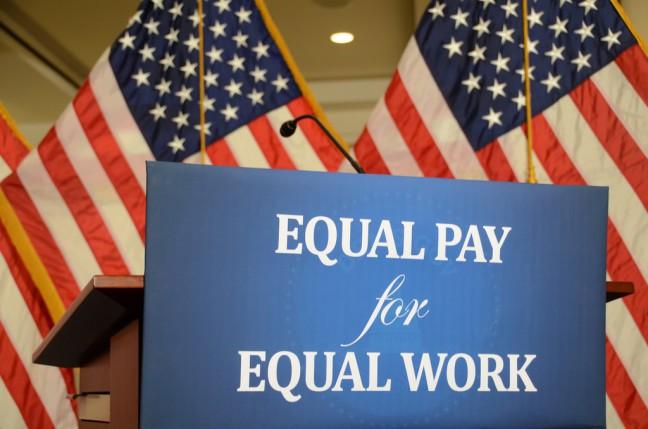The U.S. House of Representatives recently passed and sent to the Senate HR 7, also known as the Paycheck Fairness Act. This bill would enhance the Fair Labor Standards Act of 1938, which outlawed wage discrimination on the basis of sex by clarifying more precisely the reasons employers are allowed to use to justify differential wages for equal work.
Among other remedies, the bill prohibits employers from screening job applicants based on their salary history and provides women with additional legal tools for obtaining equal pay for equal work.
The Wisconsin representatives were divided across party lines.
According to the National Partnership for Women and Families, the median annual pay for women in Wisconsin who hold a full-time, year-round job is $38,594, while men earn an average of $49,306. This means that women in Wisconsin are paid 78 cents for every dollar paid to men — an annual wage gap of $10,712. So yes, the wage gap does exist, but researchers struggle to find the smoking gun that says discrimination against women is the sole cause.
In an analysis published by the IZA Institute of Labor Economics, industry type, occupational segregation, differences in experience level, and educational attainment did account for most of the wage gap, but they attributed about 38 percent of the gap to “unexplained factors.”
“The persistence of an unexplained gender wage gap suggests, though it does not prove, that labor market discrimination continues to contribute to the gender wage gap,” the report said.
They also say that the decrease in discrimination over time correlates with the narrowing of the gap over time. But suggestions and correlations aren’t conclusive.
Claudia Goldin, a professor of economics at Harvard University, published a paper in 2014 detailing her research on what she calls “temporal flexibility” and how women tend to value this more than men. She concluded, “the gap exists because hours of work in many occupations are worth more when given at particular moments and when the hours are more continuous.”
Women and men of equal education and experience might still make differential wages within the same occupation because at certain points in their careers they make different decisions. Women will often take a pay cut to work flexible hours. Goldin suggests that the gender pay gap would be considerably reduced, possibly down to zero, if companies stopped rewarding individuals for working long and particular hours.
If the talking points aren’t very convincing, there is new evidence from the gig economy that might give us better data on the theories behind the wage gap. In a paper published last month, five economists examined the labor supply choices and earnings of over 1.8 million drivers for Uber.
This rideshare company pays its drivers using a simple, transparent algorithm that takes into account length of the ride in both miles and minutes, plus a surge multiplier during excessively high demand. The pay structure is tied directly to output — not gender — and it is not negotiable. There is also no wage penalty for temporal flexibility as the work can be done completely on their own schedule. Because of all this, the authors hypothesized there would be no gender wage gap at Uber.
They found that male drivers earn about 7 percent more than their female counterparts, but that this gap can be entirely attributed to three factors. Twenty percent of the gap can be explained by preferences over the types of trips you tend to focus on — men are more willing to drive in areas with higher crime and more drinking establishments. Another 30 percent of the gap can be explained by experience on the platform — women leave the platform more often than men. The remaining 50 percent of the wage gap was explained by speed preferences. Men tend to drive just a little faster than women and are thus able to finish more trips per hour.
This new data suggests that the wage gap is complicated. Even in jobs that are gender-blind and have temporal flexibility, wage gaps still persist, though they are completely explained away by gendered preferences. The mantra is “Equal Work, Equal Pay,” but it turns out, the work is not equal. If we really want the gap to be zero, we need to legislate the choices men and women make.
Lianna Schwalenberg (lschwalenber@uwalumni.com) is a recent graduate with degrees in communication arts and philosophy.


